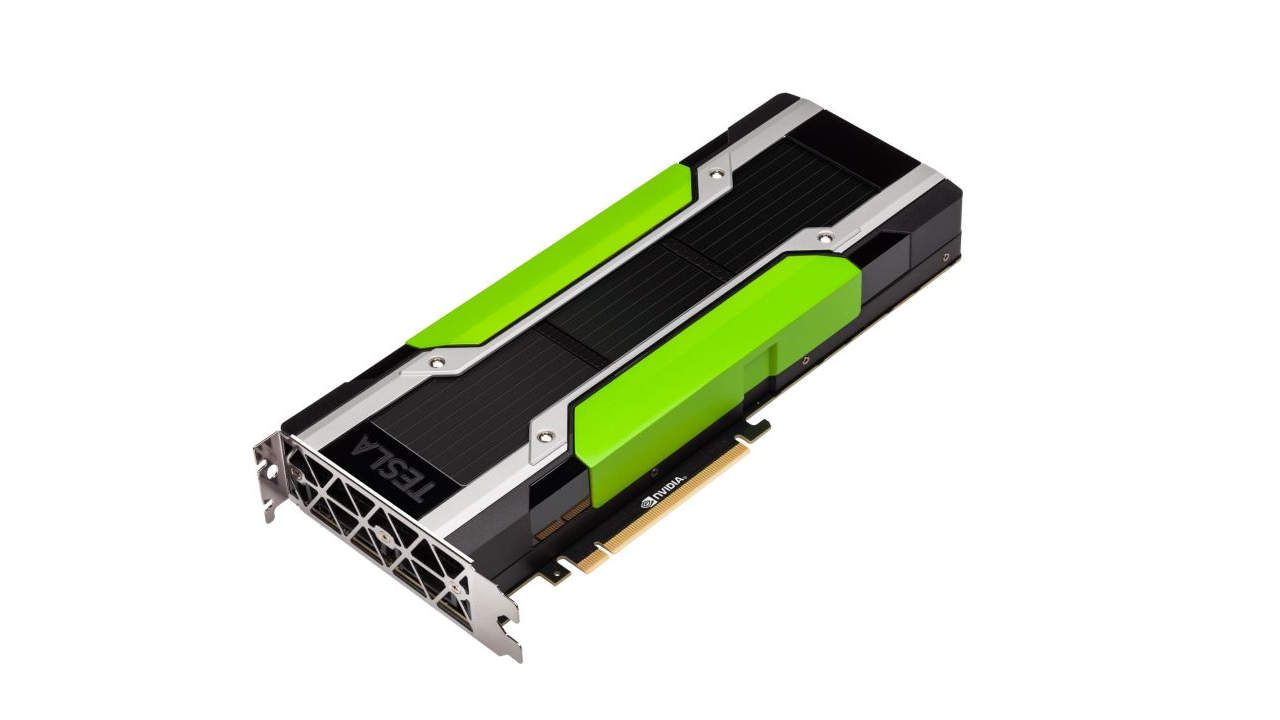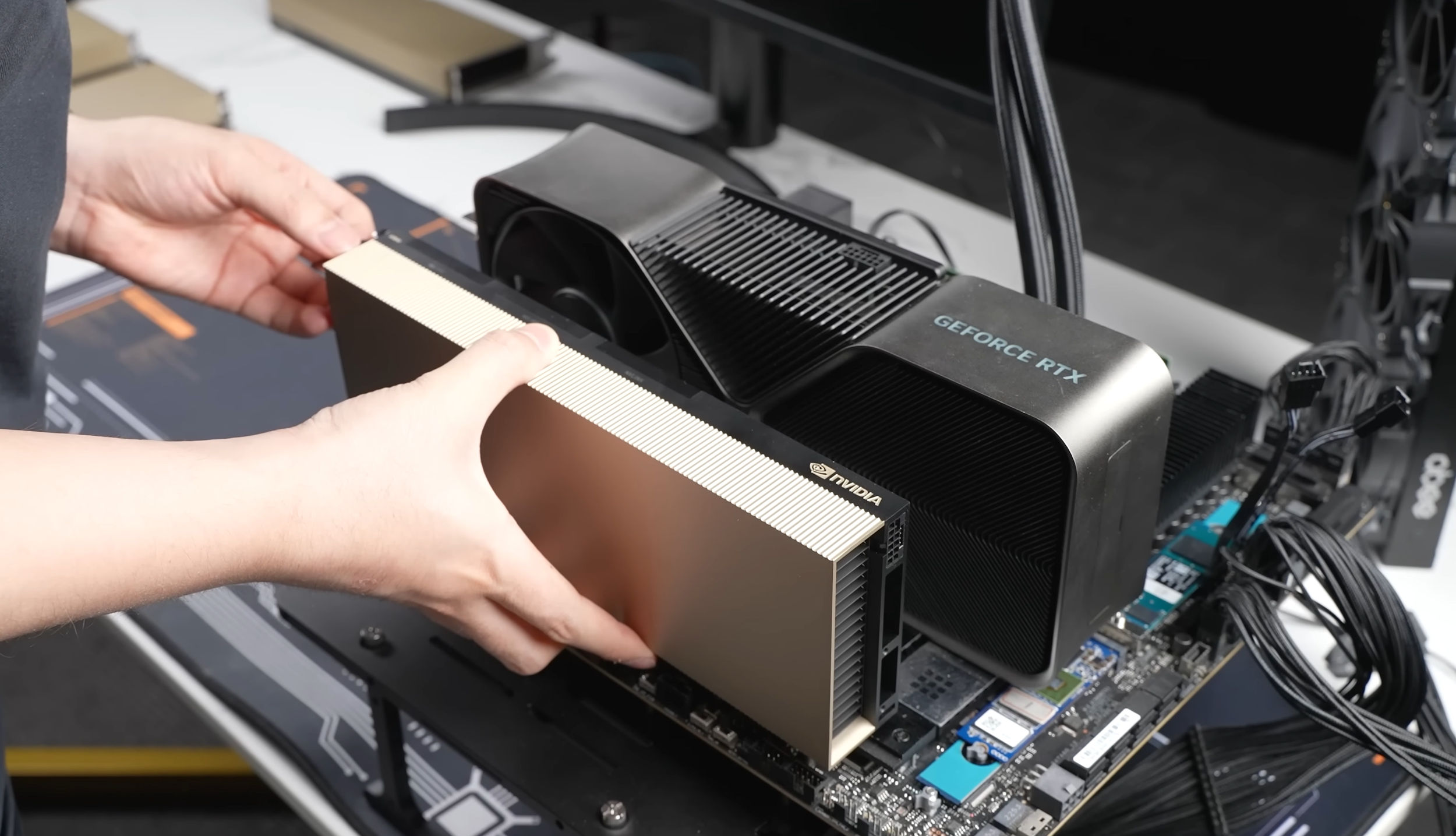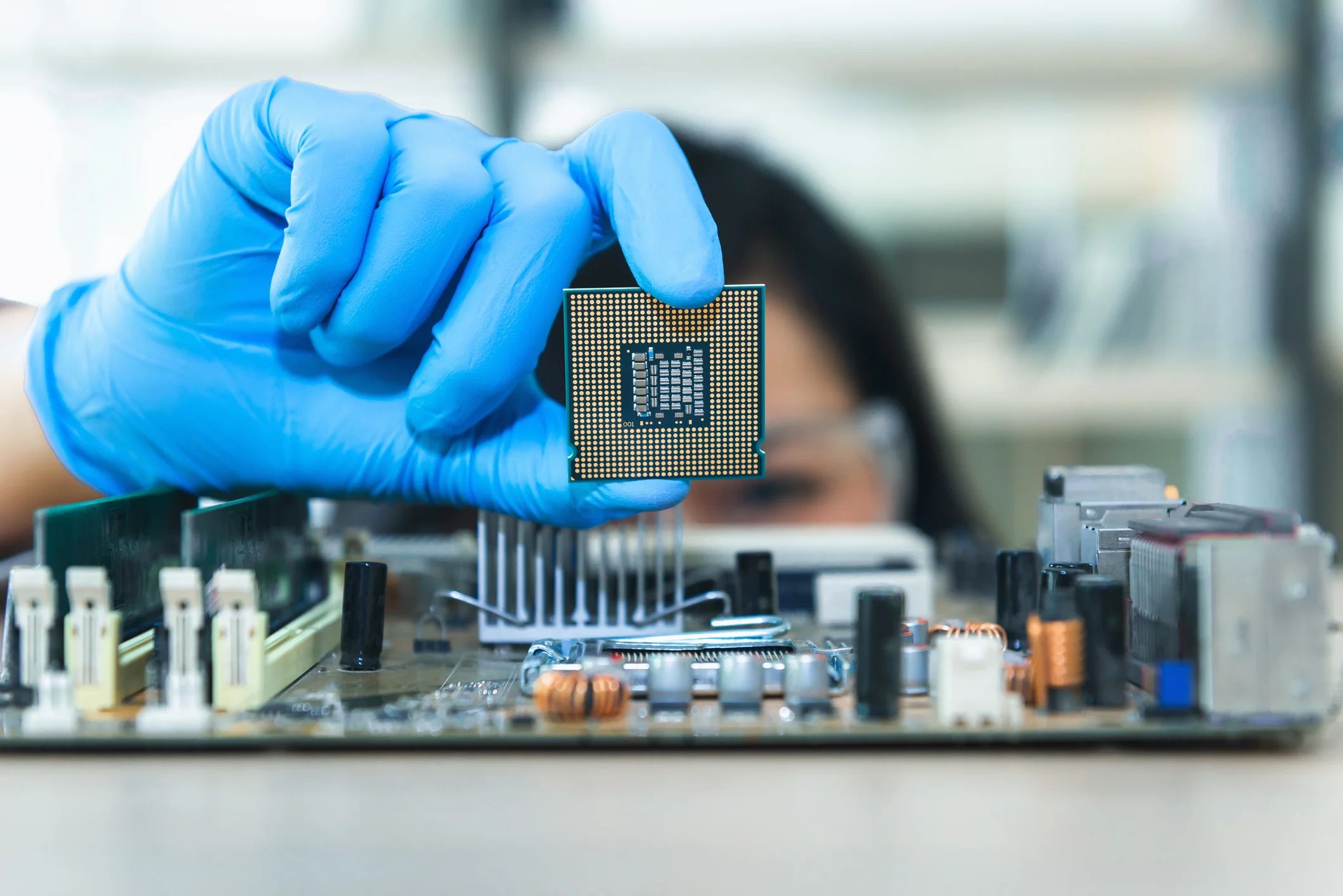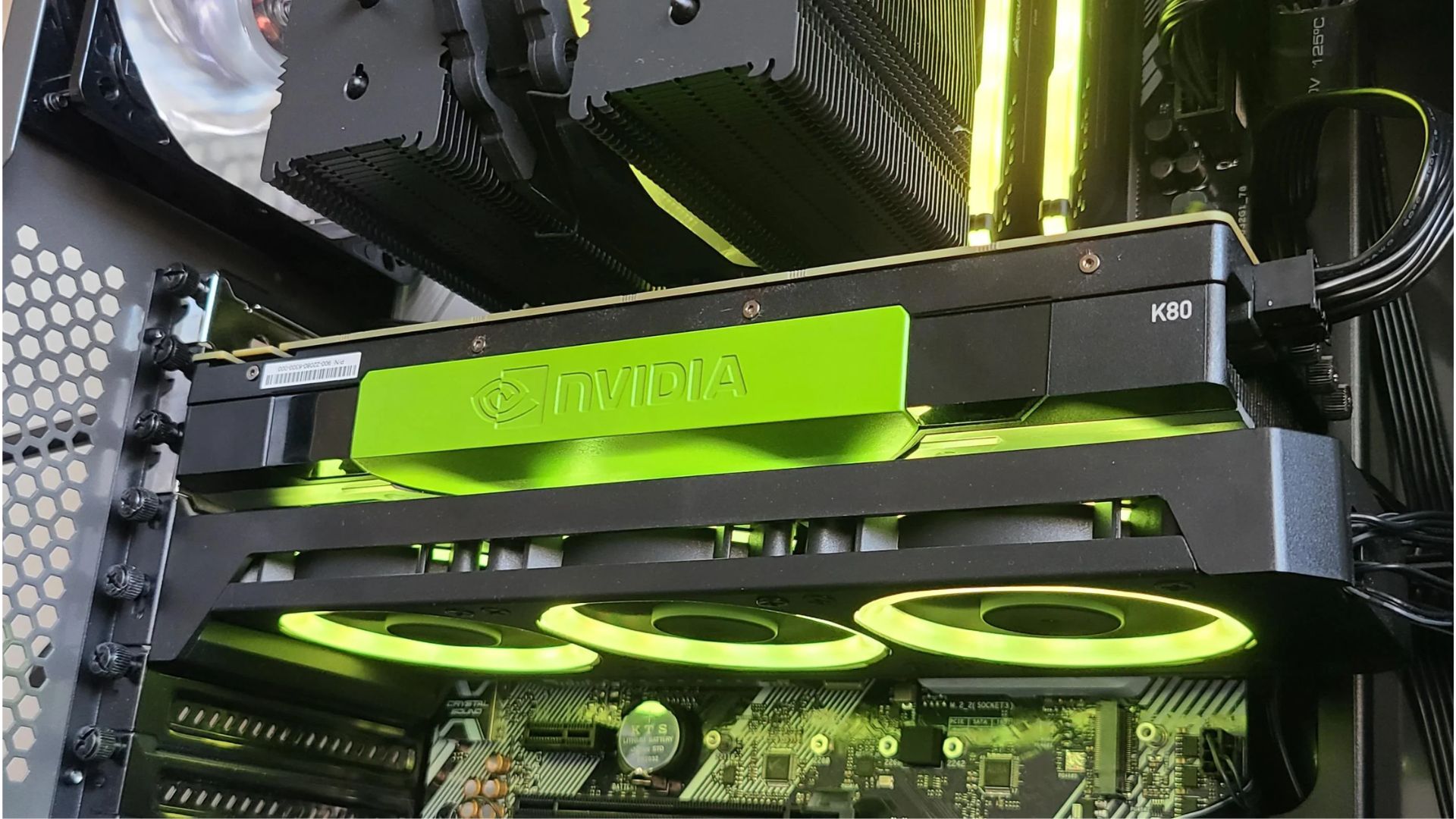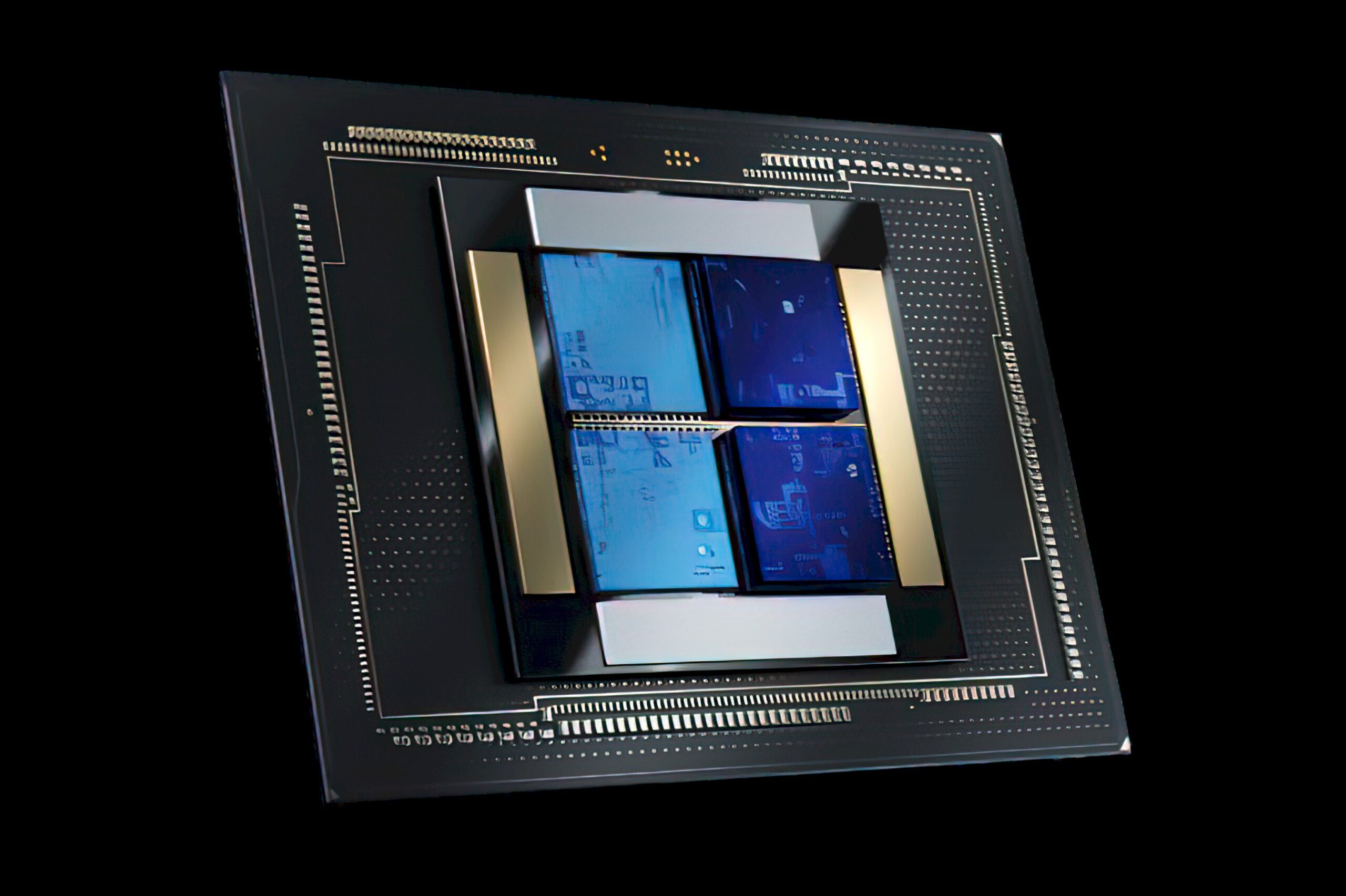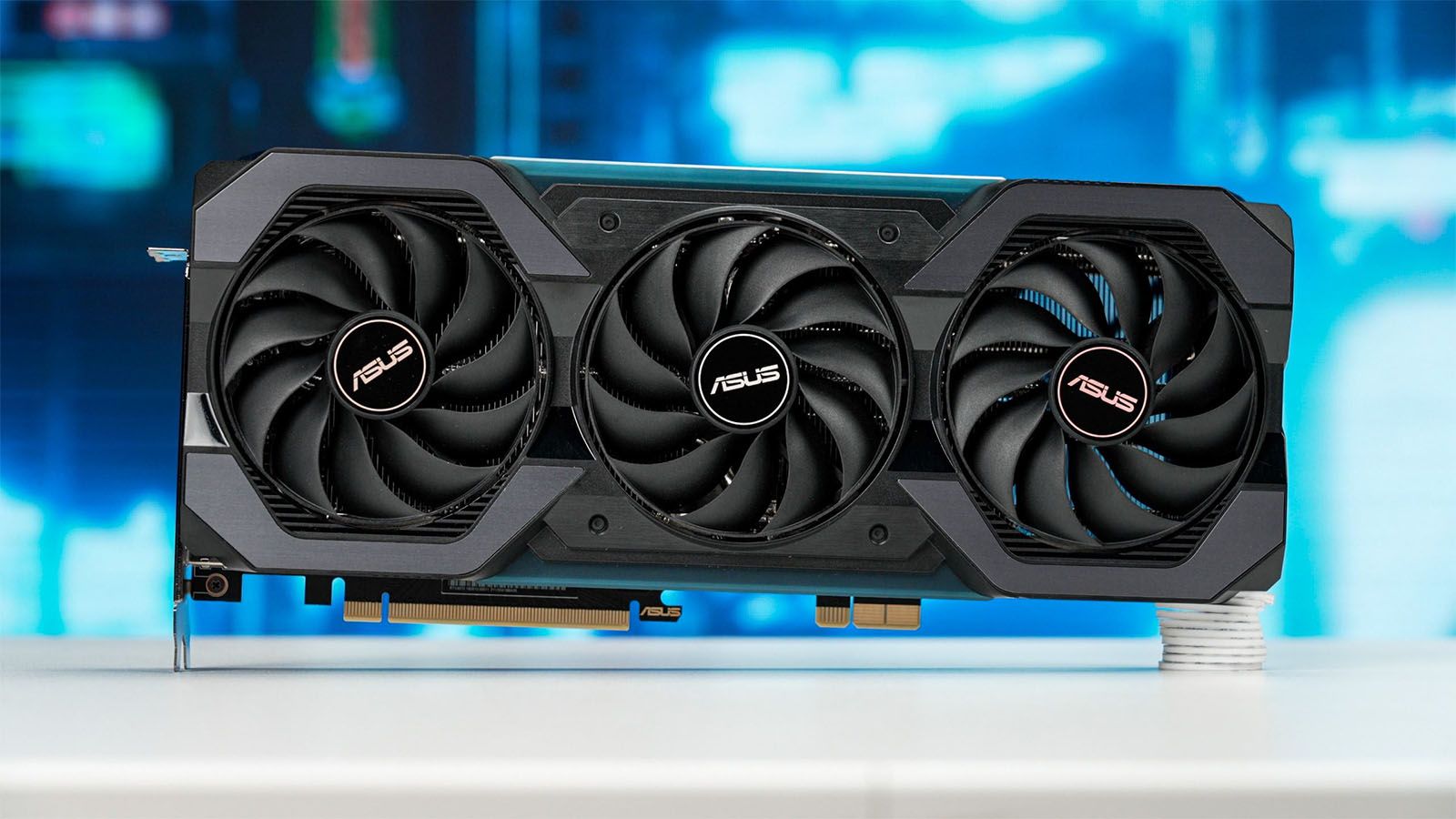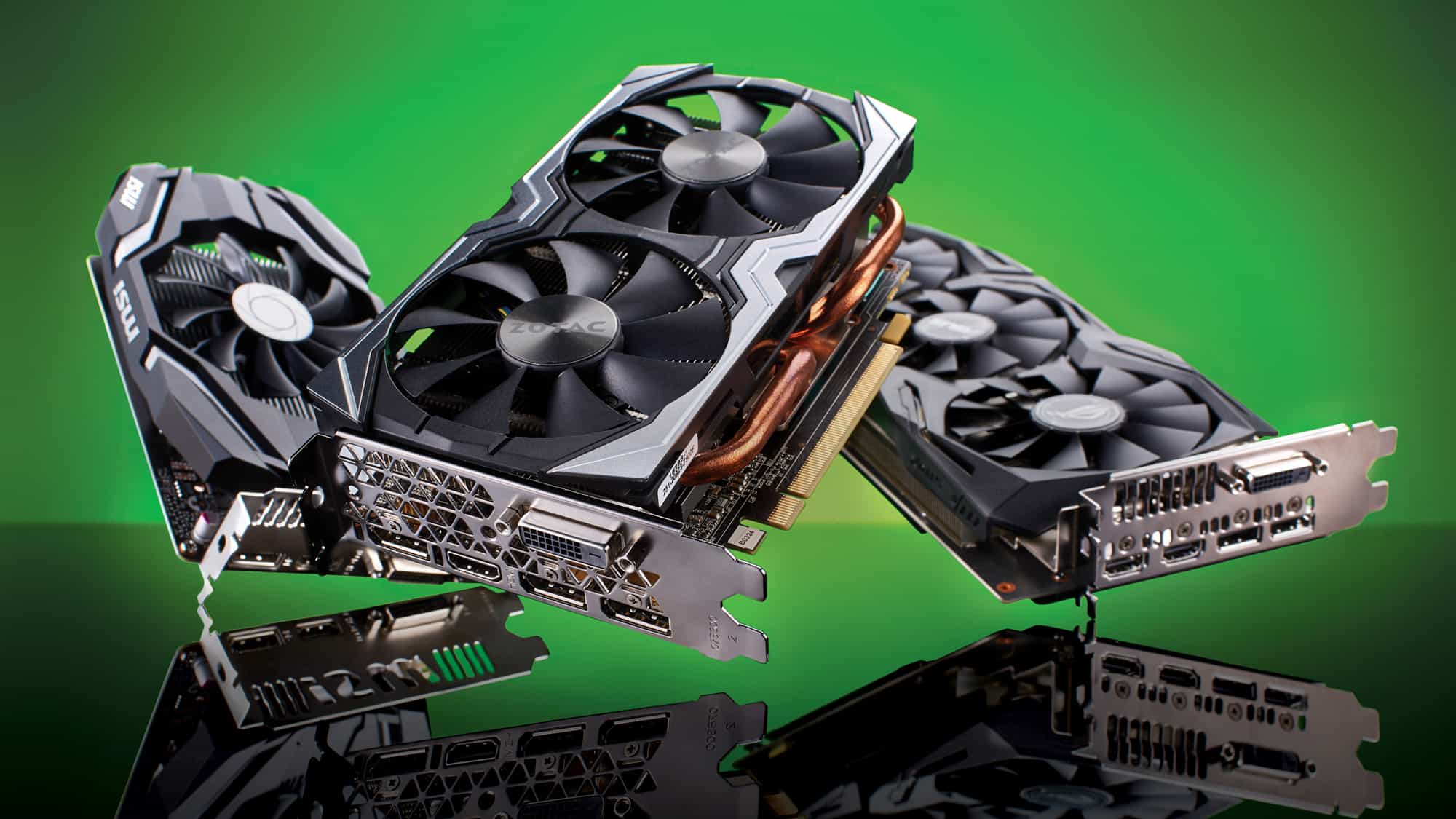What Is a GPU Accelerator
A GPU (Graphics Processing Unit) accelerator, also known as a GPU compute accelerator or simply a GPGPU (General-Purpose Graphics Processing Unit), is a specialized hardware device that offloads computationally intensive tasks from the CPU (Central Processing Unit) and performs them in parallel on the GPU. While GPUs were initially designed for rendering graphics in gaming and visualization applications, they have evolved to become powerful tools for general-purpose computing.
GPU accelerators are specifically designed to handle highly parallel workloads, where multiple calculations can be performed simultaneously. They are equipped with thousands of cores that can execute instructions in parallel, enabling significant performance gains compared to traditional CPUs.
One of the key advantages of GPU accelerators is their ability to process large datasets and perform complex computations at an accelerated rate. This makes them ideal for applications that require massive parallelism, such as scientific research, data analysis, machine learning, and artificial intelligence.
By harnessing the computational power of GPU accelerators, tasks that would have taken hours or days to complete on a CPU can be executed in a fraction of the time. This greatly enhances productivity and opens the door to new possibilities in various fields.
GPU accelerators are commonly used in high-performance computing environments, where speed and efficiency are crucial. They are deployed in servers, workstations, and supercomputers to accelerate a wide range of applications, including simulations, image processing, financial modeling, and bioinformatics.
Furthermore, GPU accelerators are not limited to scientific and technical domains. They are also utilized in industries such as media and entertainment, where real-time rendering, video editing, and animation require immense computational power.
In summary, a GPU accelerator is a specialized hardware device that harnesses the parallel processing capabilities of GPUs to accelerate computationally intensive tasks. With their ability to handle massive datasets and perform complex calculations at an accelerated rate, GPU accelerators have become an indispensable tool for a wide range of applications, from scientific research to multimedia production.
Why Use a GPU Accelerator
There are several compelling reasons to use a GPU accelerator for computationally demanding tasks. Let’s explore some of the key advantages:
- Increased Performance: GPU accelerators are designed to handle parallel workloads efficiently, allowing for significantly faster processing speeds compared to traditional CPUs. This is especially beneficial for tasks that involve complex calculations or large datasets.
- Cost Efficiency: GPU accelerators offer a cost-effective solution for high-performance computing. With their ability to process multiple tasks simultaneously, they can reduce the need for multiple CPU servers or workstations, leading to cost savings in terms of hardware, energy consumption, and maintenance.
- Improved Parallelism: Many applications can benefit from the parallel processing capabilities of GPU accelerators. By dividing tasks into smaller parallel units, GPUs can handle multiple calculations simultaneously, leading to faster execution times and increased efficiency.
- Enhanced Scalability: GPU accelerators can be easily scaled for high-performance computing environments. Multiple GPUs can be deployed in clusters or racks, enabling even greater computational power and the ability to handle more complex tasks.
- Optimized for Specific Workloads: GPU accelerators are built with specialized architectures and libraries that are tailored for specific tasks, such as machine learning or scientific simulations. This optimization allows for better performance and improved accuracy in these specific domains.
- Powerful Visualization Capabilities: Besides their computational power, GPU accelerators excel in graphic-intensive applications. They can handle large datasets for real-time visualization, enabling professionals in fields such as gaming, virtual reality, and design to create immersive and realistic experiences.
Overall, GPU accelerators offer a compelling solution for processing-intensive tasks. Whether it’s accelerating scientific simulations, training deep learning models, or optimizing real-time graphics, the advantages of speed, cost efficiency, scalability, and specialized optimization make GPU accelerators a valuable asset for a wide range of industries and applications.
How Does a GPU Accelerator Work
A GPU accelerator works by leveraging the parallel processing capabilities of the GPU to offload computationally intensive tasks from the CPU. Let’s take a closer look at the underlying mechanisms:
At its core, a GPU accelerator is equipped with thousands of small processing units known as cores. These cores work in unison to execute instructions simultaneously, enabling massive parallelism. Unlike traditional CPUs that typically have a few cores optimized for serial processing, GPUs excel in parallel processing, making them ideal for tasks that can be divided into smaller, independent calculations.
When a task is assigned to a GPU accelerator, the data and instructions are transferred from the CPU to the GPU’s memory. The CPU then sends a command to the GPU, specifying the computation to be performed. The GPU’s processor cores simultaneously execute the instructions on the assigned data, leading to rapid and efficient processing.
Furthermore, GPU accelerators employ specialized software frameworks, such as CUDA (Compute Unified Device Architecture) or OpenCL (Open Computing Language), which provide an interface for developers to harness the power of the GPU. These frameworks allow programmers to write code that can be executed on the GPU, taking advantage of its parallel processing capabilities.
To achieve optimum performance, GPU accelerators are designed with memory hierarchies that include registers, caches, and global memory. These memory layers enable efficient data access and minimize latency, ensuring the GPU is able to process data quickly and effectively.
It is worth noting that not all tasks are suitable for GPU acceleration. Some applications may be inherently sequential or may require complex data dependencies, making them less amenable to parallel processing. In such cases, a CPU may still be the preferred choice.
Overall, the parallel processing architecture, specialized software frameworks, and optimized memory subsystems of GPU accelerators allow for efficient execution of highly parallel tasks. By offloading these compute-intensive workloads from the CPU, GPU accelerators offer dramatically improved performance and the ability to handle complex computations in a fraction of the time.
Types of GPU Accelerators
GPU accelerators come in various forms, each catering to different requirements and use cases. Let’s explore a few common types:
- Desktop GPU Accelerators: These GPU accelerators are designed for installation in desktop computers and workstations. They typically feature a PCI Express interface and provide a high-performance computing solution for individuals and small teams. Desktop GPU accelerators are commonly used in industries like gaming, animation, and video editing.
- Server GPU Accelerators: Server GPU accelerators are specifically designed for high-performance computing (HPC) environments. These accelerators are typically installed in server racks and come with multiple GPUs to handle parallel workloads. They are commonly used in scientific research, data centers, and cloud computing platforms to accelerate tasks such as simulations, deep learning, and big data processing.
- Cloud GPU Accelerators: Cloud-based GPU accelerators provide virtualized GPU resources in the cloud, allowing users to access high-performance computing capabilities without having dedicated hardware. These services are popular in industries where on-demand scalability and cost efficiency are crucial, such as machine learning, data analytics, and rendering.
- External GPU Accelerators: External GPU accelerators connect to a computer or laptop via a high-speed interface like Thunderbolt. They provide additional GPU power to systems that may have limited graphics capabilities, offering an upgrade path for portable devices or older hardware. External GPU accelerators are commonly used by professionals in industries like video editing, 3D modeling, and gaming.
- Embedded GPU Accelerators: Embedded GPU accelerators are integrated into small form-factor devices such as embedded systems, IoT devices, and automotive systems. These accelerators provide efficient and low-power processing capabilities, enabling advanced functionalities like computer vision, real-time analytics, and AI inferencing in edge devices.
It’s important to note that the choice of GPU accelerator depends on factors such as the specific application requirements, budget limitations, available infrastructure, and scalability needs. Evaluating these factors and selecting the right type of GPU accelerator ensures optimal performance and efficiency for the intended workload.
Benefits of Using a GPU Accelerator
Using a GPU accelerator offers several significant benefits for computationally intensive tasks. Let’s explore some of the key advantages:
- Improved Performance: GPU accelerators are designed to handle highly parallel workloads, resulting in significantly faster processing speeds compared to traditional CPUs. By offloading complex calculations to the GPU, tasks can be completed in a fraction of the time, leading to increased productivity and faster time-to-insight.
- Efficient Parallel Processing: GPU accelerators are equipped with thousands of cores that can process multiple calculations simultaneously. This parallelism allows for the efficient execution of complex algorithms and the handling of large datasets, leading to faster insights and analysis.
- Cost-Effectiveness: GPU accelerators offer a cost-effective solution for high-performance computing. They provide a higher performance per dollar ratio compared to traditional CPUs, allowing organizations to achieve faster results without investing in expensive hardware infrastructure.
- Enhanced Scalability: GPU accelerators can be easily scaled by adding multiple GPUs to a system. This scalability enables organizations to handle larger and more complex workloads, without the need for significant changes to their existing infrastructure.
- Specialized Optimization: GPU accelerators are optimized for specific workloads, such as machine learning, scientific simulations, and rendering. They provide libraries and frameworks that enable developers to leverage the full potential of the GPU, resulting in improved accuracy and performance in these specific domains.
- Powerful Visualization Capabilities: GPU accelerators excel in graphic-intensive applications, making them ideal for tasks that require real-time high-quality visualization. From gaming to virtual reality and design, GPU accelerators enable professionals to create immersive and realistic visual experiences.
- Energy Efficiency: Despite their high performance, GPU accelerators are designed to be energy-efficient. Their parallel processing architecture allows for better utilization of resources, reducing overall power consumption and operational costs.
By leveraging the benefits of GPU accelerators, organizations can unlock the potential of their data and accelerate the pace of innovation. Whether it’s performing complex simulations, training machine learning models, or rendering stunning graphics, GPU accelerators provide the computational power needed to drive breakthrough discoveries and advancements in various fields.
Applications of GPU Accelerators
GPU accelerators find applications in a wide range of industries and fields where high-performance computing is required. Let’s explore some of the key areas where GPU accelerators are making a significant impact:
- Scientific Research: GPU accelerators play a crucial role in scientific research, enabling scientists to perform complex simulations, analyze large datasets, and model intricate phenomena. They are used in fields such as physics, chemistry, biology, and climate science to accelerate research and gain new insights.
- Machine Learning and Artificial Intelligence: GPU accelerators have revolutionized the field of machine learning and artificial intelligence. They are used to train deep neural networks, process large amounts of data, and perform real-time inference. GPU accelerators have enabled advancements in areas like computer vision, natural language processing, and autonomous systems.
- Data Analytics and Big Data Processing: With the exponential growth of data, GPU accelerators provide a powerful solution for processing and analyzing large datasets. They enable faster data transformation, visualization, and predictive analytics. GPU accelerators are utilized in industries like finance, healthcare, e-commerce, and marketing to gain actionable insights from vast amounts of data.
- Computer-Aided Design and 3D Modeling: GPU accelerators are extensively used in industries that involve designing and modeling, such as architecture, automotive, and entertainment. They enable real-time rendering, simulation, and visualization of complex 3D models, allowing designers and artists to create realistic and immersive experiences.
- Medical Imaging and Biotechnology: GPU accelerators are used in medical imaging applications, such as MRI and CT scans, to accelerate image reconstruction and analysis. They also aid in genomics research, drug discovery, and protein folding simulations, allowing for faster and more accurate results in the field of biotechnology.
- Financial Modeling and High-Frequency Trading: GPU accelerators play a crucial role in the financial industry, where speed and accuracy are paramount. They are used in tasks like risk analysis, portfolio optimization, option pricing, and high-frequency trading, enabling financial institutions to make informed decisions in real-time.
- Real-Time Graphics and Visual Effects: GPU accelerators are essential in the entertainment industry, including gaming, film, and animation. They enable real-time rendering of complex graphics, physics simulations, and visual effects, enhancing the overall immersive experience for end-users.
These are just a few examples of the diverse applications of GPU accelerators. As technology advances, new areas of utilization continue to emerge, expanding the possibilities and pushing the boundaries of what can be achieved with high-performance computing.
Key Features to Consider When Choosing a GPU Accelerator
When selecting a GPU accelerator, several important factors need to be considered. These key features can help determine the suitability and effectiveness of the accelerator for your specific needs:
- Compute Performance: The compute performance of the GPU accelerator is a crucial consideration. This includes the number of cores, clock speed, and memory bandwidth. Higher compute performance allows for faster processing and better overall performance.
- Memory Capacity: The memory capacity of the GPU accelerator affects its ability to handle large datasets and complex calculations. Consider the memory requirements of your specific applications to ensure optimal performance.
- Memory Type: Different GPU accelerators utilize different types of memory, such as GDDR6 or HBM. The choice of memory type can impact the performance and efficiency of the accelerator, so it’s important to understand the memory architecture and its suitability for your workloads.
- Power Consumption: GPU accelerators can consume significant amounts of power, especially in high-performance computing environments. Consider the power requirements and energy efficiency of the accelerator to minimize operational costs and ensure compatibility with your existing infrastructure.
- Software Compatibility: Ensure that the GPU accelerator is compatible with the software, frameworks, and libraries you plan to use. Popular frameworks like CUDA and OpenCL are supported by most accelerators, but it’s important to verify compatibility to ensure smooth integration with your existing workflows.
- Form Factor: The form factor of the GPU accelerator should align with your system requirements. Consider whether you need a desktop-sized card, a server rack-mounted accelerator, or an external GPU enclosure depending on your deployment needs.
- Support and Maintenance: Check the support and maintenance options provided by the GPU accelerator manufacturer or vendor. This includes driver updates, firmware upgrades, and technical support, which are essential for ensuring ongoing performance and reliability.
- Price and Budget: Assess the cost of the GPU accelerator and consider how it fits within your budget. Consider the performance-to-price ratio and weigh it against your specific workload requirements to make an informed decision.
By carefully considering these key features, you can choose a GPU accelerator that meets your specific needs, maximizes performance, and provides a cost-effective solution for your high-performance computing requirements.
Comparison of Different GPU Accelerators
When comparing different GPU accelerators, it’s important to consider various factors that can impact their performance and suitability for specific applications. Let’s examine some key aspects to compare:
- Compute Performance: Compare the compute performance metrics of different GPU accelerators, such as the number of cores, clock speed, and memory bandwidth. Higher compute performance generally translates to better overall performance.
- Memory Capacity: Compare the memory capacity of the accelerators, as it impacts their ability to handle large datasets and memory-intensive tasks. Consider whether the available memory is sufficient for your specific applications.
- Memory Type and Bandwidth: Compare the memory type and bandwidth of the accelerators. Different memory technologies, such as GDDR6 or HBM, offer varying levels of performance and efficiency. Higher memory bandwidth enables faster data transfer between the GPU and memory.
- Power Consumption: Compare the power consumption of different accelerators, as this can impact operational costs and energy efficiency. Look for accelerators that strike a balance between performance and power consumption, based on your budget and environmental considerations.
- Software Compatibility: Assess the compatibility of the accelerators with the software, frameworks, and libraries you plan to use. Verify whether the accelerators support popular frameworks like CUDA or OpenCL, ensuring smooth integration with your existing workflows.
- Form Factor: Compare the form factors of the accelerators. Determine whether you need a desktop-sized GPU card, a server rack-mounted accelerator, or an external GPU enclosure based on your deployment needs and space availability.
- Support and Maintenance: Research the support and maintenance options provided by the accelerator manufacturers or vendors. Look for factors such as driver updates, firmware upgrades, and technical support, as these are essential for ongoing performance and reliability.
- Price and Value: Compare the prices of different GPU accelerators and assess the value they offer based on their performance and features. Consider the performance-to-price ratio and assess how well the accelerators align with your budget and specific workload requirements.
By carefully comparing these factors, you can make an informed decision and choose the GPU accelerator that best suits your needs. Remember to prioritize the requirements of your specific applications to ensure optimal performance and cost-effectiveness.
How to Install and Configure a GPU Accelerator
Installing and configuring a GPU accelerator involves several steps to ensure proper integration and optimal performance. Here’s a general guide to help you through the installation and configuration process:
- Check System Compatibility: Before purchasing a GPU accelerator, verify that your system meets the hardware and software requirements. Check if your motherboard has the necessary PCIe slots, power supply, and compatible drivers for the GPU accelerator.
- Prepare the System: Power off your system and ensure it is disconnected from the power source. Open the computer case and locate the relevant PCIe slot where the GPU accelerator will be installed.
- Install the GPU Accelerator: Carefully align the GPU accelerator with the PCIe slot and gently push it into place until it is securely seated. Ensure any additional power connectors required by the GPU accelerator are properly connected.
- Secure and Connect: Once the GPU accelerator is installed, use the retention mechanism (if present) to secure it in place. Reassemble the computer case and reconnect all necessary cables, including the monitor, power supply, and any additional peripherals.
- Install Device Drivers: Power on your system and insert the installation media provided with the GPU accelerator. Follow the on-screen instructions to install the device drivers, which enable proper communication between the GPU accelerator and the operating system.
- Configure GPU Settings: After installing the drivers, access the GPU control panel or software utility provided by the GPU manufacturer. Adjust the settings as per your requirements, such as performance profiles, power management, or specific optimizations for your applications.
- Verify System Stability: Run stress tests or benchmarking tools to ensure stability and check for any system crashes or errors. Monitor system temperatures and adjust fan speeds if necessary, ensuring adequate cooling for the GPU accelerator.
- Optimize Application Settings: Configure your applications to utilize the GPU accelerator for maximum performance. Many applications have settings that allow you to specify the GPU to be used for processing, so ensure the GPU accelerator is selected as the preferred device.
- Keep Drivers Updated: Regularly check for driver updates from the GPU accelerator manufacturer. Updating the drivers can provide bug fixes, performance improvements, and compatibility with new software releases.
It’s important to note that the specific steps for installation and configuration may vary depending on the GPU accelerator and the operating system you are using. Always refer to the manufacturer’s documentation and guidelines for detailed instructions tailored to your specific hardware and software environment.
Troubleshooting Common Issues with GPU Accelerators
While GPU accelerators are powerful tools for high-performance computing, they can sometimes encounter issues that may impact their performance or functionality. Here are some common issues that users may face and troubleshooting steps to resolve them:
- Driver Issues: Outdated or incompatible GPU drivers can cause various problems. Ensure that you have the latest drivers installed and consider uninstalling and reinstalling them if issues persist.
- Hardware Compatibility: Check the compatibility of your system’s hardware components with the GPU accelerator. Verify that the power supply, PCIe slots, and connectors are compatible and meet the requirements specified by the GPU manufacturer.
- Overheating: Overheating can lead to performance degradation or system crashes. Ensure proper ventilation and cooling for the GPU accelerator, clean any accumulated dust, and consider adjusting fan speeds or adding additional cooling solutions if necessary.
- Power Supply Insufficiency: GPU accelerators consume significant power, so make sure that your system’s power supply is capable of providing sufficient power for the GPU accelerator. An insufficient power supply can cause system instability or failure to boot.
- Reseating the GPU: If you encounter display issues or system instability, try reseating the GPU accelerator. Power off your system, remove the GPU accelerator, and then reinsert it firmly into the PCIe slot. Ensure all power connectors are securely connected.
- Conflicting Software: Some software applications or utilities may conflict with GPU drivers or settings, leading to performance issues or system crashes. Temporarily disable or uninstall any recently installed software to identify potential conflicts.
- BIOS/UEFI Update: In some cases, updating the system’s BIOS or UEFI firmware can resolve compatibility or stability issues. Check the motherboard manufacturer’s website for any available updates and follow their instructions for firmware updates.
- System Memory Configuration: Incorrect system memory configuration can cause errors or poor performance. Ensure that your system’s memory is properly installed and running at the correct frequencies and timings specified by the manufacturer.
- Operating System Updates: Keep your operating system up to date with the latest patches and updates. Operating system updates often include bug fixes and enhancements that can resolve compatibility issues with GPU accelerators.
- Connectivity Issues: Check all cable connections between the GPU accelerator, monitor, and other peripherals. Ensure that cables and connectors are securely plugged in and free from damage or corrosion.
If the above troubleshooting steps do not resolve the issues, consult the GPU accelerator manufacturer’s support resources or contact their technical support for further assistance. They can provide specialized guidance and troubleshoot specific issues related to their hardware and software ecosystem.
Future Trends and Developments in GPU Acceleration
The field of GPU acceleration continues to evolve rapidly, driven by advancements in technology and increasing demand for high-performance computing solutions. Here are some future trends and developments to watch out for:
- Increased Processing Power: GPU accelerators will continue to see significant improvements in processing power, with the continuous advancement of GPU architectures and manufacturing processes. This will result in even faster and more efficient computing capabilities, enabling the handling of larger and more complex datasets.
- Integration of AI Acceleration: As artificial intelligence becomes more pervasive, GPU accelerators will increasingly incorporate specialized AI hardware, such as tensor cores or dedicated inference engines. These enhancements will further accelerate AI-related tasks like deep learning training and inference.
- Advancements in Memory Technologies: GPU accelerators will leverage advancements in memory technologies to deliver higher bandwidth and capacity. This will enable faster data access and manipulation, improving the performance of memory-intensive applications like simulations and data analytics.
- Multi-GPU Architectures: Multi-GPU systems will continue to be developed and optimized for high-performance computing environments. These architectures will allow synchronized, distributed processing across multiple GPUs, leading to even greater parallelism and scalability for complex workloads.
- Integration with Cloud Computing: GPU accelerators will increasingly be integrated into cloud computing platforms, providing on-demand access to high-performance computing resources without the need for dedicated hardware. This trend enables more organizations to leverage GPU acceleration for their applications.
- Energy Efficiency Improvements: GPU accelerator manufacturers will focus on improving energy efficiency to reduce power consumption and minimize the environmental impact. This will be accomplished through better power management techniques, architectural optimizations, and advancements in manufacturing processes.
- Enhanced Software Ecosystem: The software ecosystem supporting GPU accelerators will continue to expand and mature. There will be advancements in frameworks, libraries, and tools that facilitate GPU programming, making it more accessible to developers and allowing for easier integration into existing workflows.
- Emerging Applications: GPU acceleration will find applications in new and emerging areas. These may include areas such as quantum computing, autonomous vehicles, genomics, and personalized medicine, where high-performance computing is crucial for solving complex problems and making significant advancements.
- Advances in Real-Time Ray Tracing: GPU accelerators will drive advancements in real-time ray tracing technology, enabling highly realistic and immersive graphics in gaming, film, and virtual reality experiences. Ray tracing techniques will become more accessible and widely used, pushing the boundaries of visual realism.
These are just a glimpse of the exciting developments that lie ahead in the world of GPU acceleration. As technology progresses and demands for high-performance computing grow, GPU accelerators will continue to play a pivotal role in enabling groundbreaking research, innovation, and advancements across various industries.
Conclusion
GPU accelerators have revolutionized the world of high-performance computing, offering immense computational power and parallel processing capabilities. These specialized hardware devices have found wide-ranging applications in scientific research, machine learning, data analytics, graphics, and more.
With their ability to handle highly parallel workloads, GPU accelerators deliver remarkable performance gains compared to traditional CPUs. They enable faster processing, improved data analysis, and enhanced visualization, leading to accelerated insights and breakthroughs in various fields.
When choosing a GPU accelerator, it’s important to consider factors such as compute performance, memory capacity, power consumption, and software compatibility. This ensures that the chosen accelerator aligns with your specific requirements and provides optimal performance within your budget.
As the field of GPU acceleration continues to evolve, we can expect to see advancements in processing power, memory technologies, multi-GPU architectures, and energy efficiency. The integration of AI acceleration, cloud computing, and real-time ray tracing will further expand the possibilities of high-performance computing.
Overall, GPU accelerators have become indispensable tools for organizations and individuals seeking to leverage the tremendous processing capabilities of parallel computing. By harnessing the power of GPU accelerators, we can unlock new realms of knowledge, enable faster innovation, and push the boundaries of what is possible in fields ranging from scientific research to entertainment.







